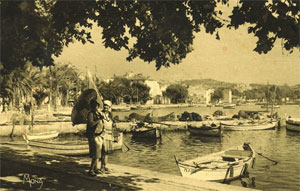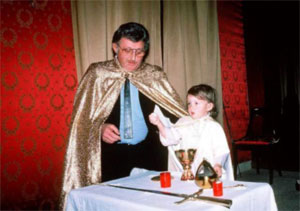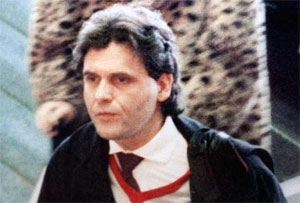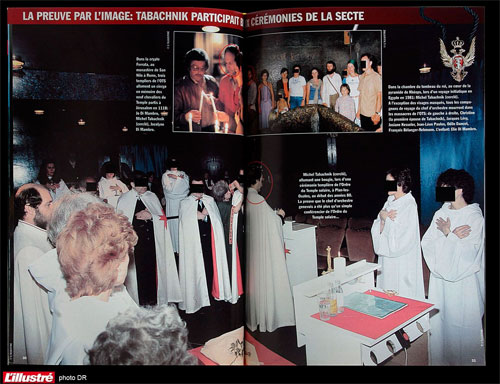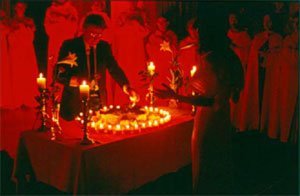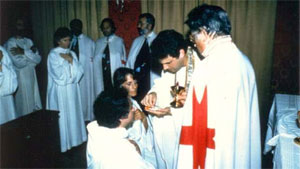by Matt Jones
Summer, 2018
NOTICE: THIS WORK MAY BE PROTECTED BY COPYRIGHT
YOU ARE REQUIRED TO READ THE COPYRIGHT NOTICE AT THIS LINK BEFORE YOU READ THE FOLLOWING WORK, THAT IS AVAILABLE SOLELY FOR PRIVATE STUDY, SCHOLARSHIP OR RESEARCH PURSUANT TO 17 U.S.C. SECTION 107 AND 108. IN THE EVENT THAT THE LIBRARY DETERMINES THAT UNLAWFUL COPYING OF THIS WORK HAS OCCURRED, THE LIBRARY HAS THE RIGHT TO BLOCK THE I.P. ADDRESS AT WHICH THE UNLAWFUL COPYING APPEARED TO HAVE OCCURRED. THANK YOU FOR RESPECTING THE RIGHTS OF COPYRIGHT OWNERS.
When was the first time you saw the sun?
Not its winding tendrils, or its luminous glow, or even its radiant essence shining down upon your skin. Not its glare, or its intensity, or its resplendent effulgence—but it. Its hopes, and dreams, and fears, and greatest regrets. Its spots. Its flares. Its magnetic loops and coronal mass ejections. Both its countenance and penetralia, its shape and depth.
When, exactly, was the first time?
The first photograph of the sun was captured on April 2, 1845 by Leon Foucault and Louis Fizeau. It wasn’t really a photograph, but a daguerreotype, which meant that the image was produced by first treating a sheet of silver-plated copper with silver iodide and bromine, then exposing it inside a camera, and finally fuming the sheet with mercury vapor.
This particular image of the sun does not look like the sun, but rather like a relative of the moon. Maybe a first cousin you only see once a year during the holidays—pale, round, and vaguely featureless in a familiar kind of way. A celestial body that you might practice kissing on until you get good enough to plant your lips on Auriga, Centaurus, Ophiuchus, or that most beautiful of chained maidens, the constellation Andromeda.
But what could you really expect from a photograph of the sun taken in 1845? It was in that same year that Rufus M. Porter published the first-ever issue of Scientific American, which mentions Signor Muzio Muzzi’s Traveling Balloon, the first airship of its kind designed to navigate wind without oars, wheels, or sails. On page two, there is mention of a slave from Charleston, South Carolina who saved a white boy from drowning in a river, and a rattlesnake that swallowed a mole only to have the rodent gnaw its way back out of the reptile’s stomach. The magazine features a list of recent inventions: an improved cotton gin, a new type of Indian rubber, and the daguerreotype camera.
This first issue of the Scientific American includes an article explaining how the daguerreotype works, as well as numerous ads for private sellers. Optician John Roach of New York was selling kits of chemicals and plates of good quality, “cheaper than from any other establishment.” Frederick Langenheim of Philadelphia and Erastus W. Pratt also claimed to offer quality equipment at the lowest prices.1
Beneath the article on Signor Muzzi’s contribution to aerial locomotion, there’s a blurb about Dr. Peter Parker’s most recent trip to China. Dr. Parker was both a missionary and an ophthalmologist who founded Canton Hospital in the most populous city in the province of Guangdong. His greatest concern as a medical missionary was helping the people of Canton see better. He operated on thousands of cases of cataracts, leucoma, staphyloma, night blindness, and pterygium, a condition thought to stem from too much direct exposure to the sun’s ultraviolet radiation. As a missionary, he considered the Chinese to be only partially civilized, a society of idol worshippers. The ophthalmologist wanted nothing more than to fix their sight and show them the light—not the kind of light that wounds eyes, but the kind that cleanses souls. It has long been said that Dr. Peter Parker “opened China to the gospel at the point of a lancet.”2
During his time in the Far East, Dr. Parker commissioned a Western-trained Chinese painter named Lam Qua to create portraits of patients who exhibited major deformities. Before the dawn of photography, painting and drawing were the primary means of illustrating medical conditions and concepts. When Lam Qua began documenting patient deformities in 1836, the daguerreotype had not yet been invented. Oil painting was a laborious and time-intensive practice that often required multiple sittings by the subject.
Now, when you gaze upon a Lam Qua portrait of someone like forty-nine-year-old Woo Kinshing, a fisherman with a ten-year-old tumor the size and shape of a cello protruding from his chest, or the postoperative Po Ashing, a laborer with his right arm missing from the shoulder down, what you experience is an old kind of painstaking. Painstaking not only on behalf of the artist, who might have spent hours or even days painting a single subject, but also on behalf of the patient—a person whose likeness was captured not instantaneously, in the brightness of their eyes or the tilt of their mouths, but in their ability to inhabit their own discomfort for the length of time it took to hold the pose.
Scientists welcomed the invention of the daguerreotype, particularly because the camera was thought to provide a more objective image than a painting ever could. Photography, though, was completely dependent on sunlight. Physician and poet Oliver Wendell Holmes regularly referred to photography as “sun-painting” and “sun-sculpture.” According to Holmes, photographers were just counterfeiters of the sunbeam. In his 1864 book Soundings of the Atlantic, the physician compared photography to a kind of redemptive violence. He referred to Louis-Jacques-Mandé Daguerre, the inventor of the daguerreotype, as Prometheus Daguerre.3
In hindsight, Holmes’ casting of Daguerre as a modern Prometheus stealing light from the gods may not have been so far-fetched. In an 1839 letter to his friend Charles Chevalier, Daguerre exclaimed, “I have seized the light—I have arrested its flight!”4
In the Czech Republic, there is an infamous work of art known as The Flaying of Marsyas, housed at the Kroměříž National Museum. It was painted by Italian Renaissance artist Titian in the late sixteenth century. The painting depicts the killing of Marsyas, an ithyphallic companion of Dionysus, who is also featured in Ovid’s Metamorphoses. As the Roman poet tells it, Marsyas challenged the great god Apollo to a music contest, and when he lost, Apollo flayed him alive. This much is depicted in the painting. Marsyas hangs upside down while his skin is cut away, his blood collecting in buckets and soaking into the soil below.
Though scholars have suggested that The Flaying of Marsyas is representative of everything from the brutality of human existence to the liberation of the spirit from the body, Oliver Wendell Holmes thought differently. The physician had an interesting theory about the intersection between Greek mythology, eternal suffering, and the modest yet burgeoning field of photography. He wrote that a “moment’s reflection reveals the true significance of this seemingly barbarous story,” which is that “Apollo was pleased with his young rival, fixed him in position against an iron rest . . . and took a photograph, a sun-picture, of him.” Amid the context of the rise of photography as an art form and increased access to the necessary equipment (through ads in magazines and newspapers, for example), Holmes said, “We are now flaying our friends and submitting to be flayed ourselves, every few years or months or days, by the aid of the trenchant sunbeam which performed the process for Marsyas. All the world has to submit to it, —kings and queens with the rest. The monuments of Art and the face of Nature herself are treated in the same way.”5
It is strange to try to equate the two: photography and excoriation. Novelist Iris Murdoch thought that the Flaying of Marsyas had something to do with “the entry of the spiritual into the human situation and the closeness of the gods.” She said it proved that Apollo was not only terrible and cruel, “but also a great artist.”6 His medium? The human body.
Dr. Peter Parker thought that many of the ailments he encountered at Canton Hospital had been made worse by Chinese medicine, what he called “pitiable superstitions.” I wonder how he thought of himself as he sliced away cancerous protuberances and cataracts from the bodies of his patients. As a great artist, a kind of god?
There is a moment in Ovid’s Metamorphoses when Marsyas asks Apollo, “Why do you peel me out of myself?”
Can you imagine saying something similar whenever someone takes your picture?
“Why do you tear me from my skin?”
Which brings us back to the original question: when was the first time you saw the sun? Not its flash, or its glare, or even its intensity. When was the first time you saw under its skin? Its surface peeled back, its fibers, viscera, and red-hot veins exposed?
Not with your eyes.
Never with your eyes.
The sun is over 4.5 billion years old, and even by April 2, 1845—the date the first photograph of the star at the center of our solar system was taken—no one had truly seen it. The daguerreotype produced by Foucault and Fizeau on that spring day hardly captured the sun’s likeness. That photograph, if you really look at it, is like a symptom of something far greater, of the disease Iris Murdoch called “human life and all its ambiguities and all its horrors and terrors and misery.”
That first photograph of the sun is like looking through a cataract—through disease itself. We are sometimes aggressively blind. The longer we stare, the less we see.
In his book Modern Times: The World from the Twenties to the Nineties, Paul Johnson writes, “The modern world began on May 29, 1919, when photographs of a solar eclipse confirmed the truth of a new theory of the universe.”7 The photographs Johnson references were taken by Sir Arthur Stanley Eddington, an English astronomer and physicist who, along with astronomer Royal Sir Frank Watson Dyson, journeyed to the African Island of Príncipe to prove the validity of Einstein’s theory of relativity.
Einstein’s general theory of relativity had been proposed three years earlier in 1916. The physical theory posited that the sun’s gravitational field bent and deflected the paths of light from surrounding stars. While Eddington and Dyson observed the 1919 solar eclipse off the west coast of Africa, French Astronomer Andrew Claude de la Cherois Crommelin looked on from Sobral, Brazil. Both locations were in the path of totality, and the sun was completely eclipsed for a total of 411 seconds.
Almost a year prior, the US Naval Observatory had obtained a grant from congress so they too could observe a solar eclipse that was set to travel a radically different trajectory. The path of totality would begin just south of Japan, then move across the Pacific Ocean, and finally into the American Pacific Northwest. The observatory’s team was composed of astronomer Samuel Alfred Mitchell and Howard Russell Butler, an artist tasked with painting the eclipse in hopes of validating Einstein’s theory of relativity. This eclipse was set to take place on June 18, 1918, and would be observed from Baker City, Oregon.
Howard Russell Butler was an accomplished painter. He had founded the American Fine Arts Society and was also the official portraitist of Andrew Carnegie, but he had never before seen an eclipse. On the day of the astronomical event, a naval officer counted down the seconds until totality:
Three . . .
Totality refers to the period during which the moon completely blocks out the sun, creating what is known as the diamond ring effect.
Two . . .
The diamond ring effect, also known as Baily’s beads, refers to the way in which solar prominences, the chromosphere, and the sun’s faint corona can be seen peeking out of the edges of the lunar silhouette.
One . . .
The only time it is safe to view a solar eclipse without protective eyewear is during the period of totality.
When the naval officer finished counting down, Butler turned his head upward. Typically, painting a portrait required a subject to sit still for hours at a time, but the duration of totality would only last 143 seconds, just shy of two and a half minutes. Butler stared for a total of 112.1 seconds, quickly making shorthand notes based on what he had seen, documenting the shapes, colors, and striations of the light. Then, while the image was still at the forefront of his mind, he completed his first eclipse painting.
Unfortunately, cloud cover obscured much of the eclipse, and the team was unable to verify Einstein’s general theory of relativity. That much-sought-after validation, however, would be achieved almost a year later under the watchful eye and camera lens of Sir Arthur Stanley Eddington. The two eclipses were part of a “semester series,” which meant they repeated every 177 days and 4 hours. The May 19, 1919 eclipse was also part of a larger series known as Solar Saros 136, which repeated every 18 years and 11 days, and had been doing so since June 14, 1360.
Who was around to gaze up at that particular event so long ago in 1360, twenty-three years into the Hundred Years’ War and near the tail end of Europe’s Black Death epidemic? What did they think when the sun momentarily disappeared behind the moon?
The Arapaho Plains Indians thought that the convergence of the sun and moon signified that the two celestial bodies were having sex. The Lacandón believed a solar eclipse was a sign that the earth would split, unleashing a great jaguar that would consume most of humanity. Suriname’s Kalina tribe assumed that the sun and moon were brother and sister. Therefore, a solar eclipse was little more than a violent confrontation between siblings. Ancient Egyptians thought that Apep, the serpentine God of Chaos, was in constant pursuit of the Sun God Ra. A solar eclipse meant that Apep had finally caught and attempted to swallow Ra whole, much as the rattlesnake did to the mole in that 1865 issue of Scientific American. The moon-worshipping Chimú culture of Peru viewed a solar eclipse as a temporary lunar victory over the sun. The Navajo believed that the 1918 eclipse—the very one that Howard Russell Butler painted—was a bad omen that foreshadowed the Spanish Influenza pandemic that would travel across Europe, then through the American Midwest, and all the way to Japan, killing up to one hundred million previously healthy adults.
In the realm of recorded history, everything from natural disasters, wars, disease outbreaks, and the death of important figures have been attributed to solar eclipses. The expeditions that set out in 1918 and 1919 to prove Einstein’s general theory of relativity were not only aimed at contributing to the framework of modern physics. They also were representative of a period in history known as the “solar revolution,” in which astronomers, artists, writers, and physicians alike all turned their gazes upward to reconsider that great shining orb in the sky.8
Annie Dillard once wrote in her essay “Total Eclipse” that “A partial eclipse is very interesting. It bears almost no relation to a total eclipse. Seeing a partial eclipse bears the same relation to seeing a total eclipse as kissing a man does to marrying him.”9
I would go so far as to say that seeing an eclipse bears almost no relation to seeing the sun itself. Seeing an eclipse, even a total one, bears the same relation to seeing the actual sun as taking a photograph does to peeling someone out of their skin.
In July of 1908, four-year-old R.R. arrived at the Leysin Sanatorium. The sanatorium was located in the Swiss Alps, high up at the eastern end of Lake Geneva overlooking the Rhône Valley. Though history does not remember his real name, little R.R. was one of Dr. Auguste Rollier’s most photographed patients. As such, his initial appearance and subsequent transformation are well documented.
While Dr. Rollier remains one of the most widely recognized heliotherapists of the era, Doctor Niels Finsen from the Faroe Islands is believed to be the true father of modern heliotherapy. In 1903, Dr. Finsen won the Nobel Prize in Medicine “in recognition of his contribution to the treatment of diseases, especially lupus vulgaris, with concentrated light radiation, whereby he has opened a new avenue for medical science.”10 This was the same year that Marie Curie, Pierre Curie, and Henri Becquerel were awarded the Nobel Prize in Physics for their discovery of “spontaneous radioactivity,” a product of an unintentional experiment in which Becquerel had placed a piece of uranium salt atop a photographic plate, stowed it away in a dark drawer, and saw that the plate had been blackened by “invisible radiation.” 1903 was also the year that Dr. Rollier, once known as the “High Priest of Modern Sun-Worshippers,” opened the Leysin Sanatorium where little R. R. would be continually photographed.11
Leysin’s high elevation and sunny alpine environment made the city an ideal location for a doctor like Rollier, a man leaving behind traditional surgical treatments of tuberculosis in favor of heliotherapy. In the late nineteenth century, a growing body of scientific evidence suggested that light therapeutics held true medical potential for curing a variety of afflictions.
Confirmation came first from European physicians like Finsen and Curie, who discovered the therapeutic potential of x-rays and ultraviolet light. In America, John Harvey Kellogg, a doctor with his own sanatorium in Battle Creek, Michigan, threw additional weight behind the movement. Kellogg’s 1897 Hygiène populaire et moniteur de la santé claimed that the sun is “the most powerful of all natural antiseptics; no morbid germ can resist the direct rays of the sun, cholera, consumption [tuberculosis], diphtheria, scarlet fever and typhoid fever, and other diseases.”12
Interestingly, the field of heliotherapy was legitimized just as much by scientific evidence as it was by the medical photographs that documented its unconventional treatment methods. Like many heliotherapists, Dr. Rollier employed the use of “before-and-after” portraits to demonstrate a patient’s journey from sickness to wellness. Most of Rollier’s patients were young children, with little R.R. the most iconic. The four-year-old’s first photograph at the sanatorium depicts him unabashedly nude, his legs and arms crossed and his blonde hair ruffled. His lesions have been outlined in blue pencil to demonstrate that he is suffering from “34 foci of osteitis (inflammation of the bone), periostitis (inflammation of the periosteum) and adenitis (inflammation of the glands or lymph nodes); from numerous fistulae and advanced tuberculosis of both feet, his right hand and left lung; as well as peritonitis (inflammation of the peritoneum) and cachexia (dramatic weight loss and general ‘wasting’).”13
In the early 1900s, the field of heliotherapy was still in its infancy, and as such was completely unregulated. Suggested sun exposure times and the degree of concentration on a specific bodily location varied widely. Some photographic documentation of heliotherapy, like those pictures found in S.H. Monell’s 1902 manual A system of instruction in X-ray methods and medical uses of light, hot-air, vibration and high-frequency currents, feature a man blindfolded and bound by leather straps to a chair, the seat situated in front of a sophisticated light lamp that looks more like a large gun. Other pictorial evidence, such as those photographs featured in J.H. Kellogg’s Light Therapeutics: A Practical Manual of Phototherapy for the Student and the Practitioner, show a woman with her hair coiffed, hands held behind her head, her breasts exposed to a focused arc of light while a smile creeps across her face.
Following a year of treatment, R.R.’s after-photo presents him as a tan, clear-skinned boy, his eyes bright and his face newly plump. Of R.R.’s progress, Dr. Rollier wrote, “The disease has not merely been arrested, but the frail, puny body has become sturdy and resistant to disease.” In a way, R.R. had been peeled from his once afflicted skin and regenerated by the light of the sun, the entire process documented by the redemptive violence of photography. For R.R., perhaps, it would have been a burning both pleasurable and painful.
Dr. Rollier’s approach to heliotherapy was holistic in the sense that he believed in whole body treatment. The heliotherapist did not advocate for his child patients to be strapped down and blasted with sunbeams. Instead, he encouraged them to play outdoors, to engage in “respiratory gymnastics” and sports in the sunshine of the countryside. Emblematic of the ideology that drove Rollier’s heliotherapy practice is a set of photographs taken at his Leysin Sanatorium. The pictures feature deeply tanned children—boys and girls clad only in white loincloths, or sometimes completely nude, skiing down alpine slopes or dancing across mountain ridges. Rollier relied less on written data than on visual aids to convey the success of his heliotherapy. While his methods were influenced by the burgeoning scientific fields of germ theory and radiotherapy, Rollier also worshipped at the altar of the sun, a mythological deity “to whom the suffering come to demand a cure for their ills.”
Dr. Albert Monteuuis, another physician turned heliotherapist based in the French Riviera, said, “The regenerating action of the sun is so profound that it produces (the word is not exaggerated) actual resurrections.” Bodies reborn. Old husks shed for new skins. Years later, during the height of the 1918 Spanish Influenza pandemic, the British government would hang posters in railway stations that read “Sunshine is Life—Come to the Riviera.”14
Of his patients, Dr. Rollier said, “Those bronzed bodies of our children, those temples with esthetical lines, only will realise beauty and harmony when they are brightened by the qualities of heart and intelligence.” These children were documented cherubically, like residents of “Never Never Land” in J.M. Barrie’s Peter Pan, first staged in 1904. The very images themselves were framed as an act of magic in which “modern medical practice and ancient sun worship are constructed as one and the same.”15
Still, in the early twentieth century, no one had truly seen the sun, though artists and physicians alike had attempted to chronicle glimpses of its countenance. To convey its glow. Its ultraviolet, radioactive rays. The way its light, as described in André Gide’s 1902 novel The Immoralist, created a “delicious burning” sensation capable of allowing the central essence of the self to surge up through the skin and be born anew.
During the time of the solar revolution, writers too tried to stare into the sun—if not to see it with their eyes, then to at least glance at it with some deeper part of themselves. If photography was tasked with representing the world through the lens of objective truth, then writing was something different altogether.
How is that the story of Icarus goes again? How does the myth of the young titan Phaethon, son of the sun god Helios, turn out? We have told ourselves so many stories about the sun over the last 200,000 years. Scientific ones. Fairy tales. My personal favorite is that of Eos, Greek goddess of the dawn, bringer of the morning light, who after being cursed by Aphrodite developed an insatiable appetite for young mortals.
The rise of heliotherapy and the use of sunlight to treat illnesses like rickets and lupus also led to the rise of sunbathing. The new common wisdom of the early twentieth century was that sunbathing should be used not only as preventative medicine, but also as a leisure activity. Throughout the 1920s, Europeans flocked to the French Riviera to relish in the restorative powers of the sun. In 1926, D.H. Lawrence wrote what is considered to be the first piece of fiction about sunbathing, appropriately titled “Sun.” The short story appeared in his collection The Woman Who Rode Away, and centers around Juliet, an unhappily married woman whose New York doctors send her to Sicily in the hopes of curing her depression. The first line of the story is the doctor’s dialogue: “‘Take her away, into the sun.’”16 The rest of the tale follows Juliet’s time in Italy as her exposure to the sunshine awakens a powerful, dormant sexuality. This story, as Merlin Coverley notes in his book South, “summarizes precisely the sort of sun mania that was to become, momentarily at least, so widespread in the Southern Europe of the 1920s.”17 [b]An uncensored version of the short story was published three years later, for which D.H. Lawrence was paid $100 in the form of “twenty-dollar gold pieces emblazoned with the sun.”18 The man who paid him was widely considered to be more than a little mad, “the most sun-obsessed of the whole sun-obsessed inter-war generation.” His name was Harry Crosby.
In 1927, Harry Crosby and his wife Caresse, who had earlier received the first patent for the modern bra, founded Black Sun Press. The publishing venture was headquartered just outside of Paris in a medieval mill dubbed Le Moulin du Soleil—the Mill of the Sun. The Crosbys kept friends like Salvador Dali, Henri Cartier-Bresson, and Ernest Hemingway. Through Black Sun Press, they published works by Archibald MacLeish, James Joyce, D.H. Lawrence, and T.S. Eliot. At their medieval mill—a mix of old stone buildings sans modern telephones or electricity—the couple hosted wild parties that featured rounds of drunken polo played atop donkeys. Harry could frequently be found sunbathing in the nude. He called himself a “sun-worshipper in love with death.”19 He signed his name with an arrow jutting into a doodle of a black sun affixed to the “y” in Crosby, claiming the signature was symbolic of “a phallic thrust received by a welcoming erogenous zone.”20 He and Caresse enjoyed an open marriage.
Lawrence, also obsessed with the sun, believed that the solar plexus was the “first and greatest and deepest center of consciousness.” He maintained that this special nerve center behind the stomach contained the same energy as the sun—that despite our umbilical cords being clipped at birth, the solar plexus was the sight of the “invisible string of dynamic consciousness.”21
Literary critic Martin Green called the writers of the Lost Generation “Sonnenkinder,” or “children of the sun.”22 Perfect, impossibly alive. Nudists. Free spirits. Essayist Stephen Spender wrote of men like Crosby and Lawrence, “their minds were filled with an abstraction of the sun, a huge circle of fire, an intense whiteness blotting out the sharp outlines of all other forms of consciousness.”23
To be a child of the sun in the 1920s was to burn brightly and quickly. In 1928, Harry Crosby began an open affair with Josephine Noyes Rotch, a woman he referred to as the “Youngest Princess of the Sun.”24 Their relationship was both hostile and romantically intense. Together they barricaded themselves in hotel rooms for days at a time, smoking opium and eating opulently. On December 9, 1929, Josephine sent Harry a poem, thirty-six lines long, with the last line, “Death is our marriage.”25 A day later, their bodies were discovered in a studio apartment, each with a bullet hole in their temples. The media couldn’t decide whether the act was a murder-suicide or a suicide pact. The coroner noted two tattoos on the soles of Harry’s feet: one of a Christian cross and the other of the pagan symbol for the sun.
D.H. Lawrence had suffered from tuberculosis most of his life, and like many writers of the era, had chased the sun for reasons both medicinal and spiritual. The last book he ever wrote was called Apocalypse, a manuscript of criticism he completed while traveling around the south of France. Toward the beginning, he surmises, “There is an eternal vital correspondence between our blood and the sun . . . The same with the moon, the planets, the great stars. They are either our makers or our unmakers. There is no escape.”26 Lawrence was finally “unmade” on March 2, 1930, just a few short months after the death of his publisher. However, unlike with Crosby, there were living witnesses to Lawrence’s death. Close companion and fellow writer Aldous Huxley and his wife Maria stood, steadfast, at the forty-four-year-old’s bedside. Huxley was no stranger to the French Riviera. He had written Brave New World during the seven years that he had lived in the nearby, sunny village of Sanary-sur-Mer.27
Throughout his short life, Lawrence viewed both writing and human existence as a sort of “thought-adventure.”28 The man was nomadic, constantly in motion. He believed that to find purpose in life one must “turn to the old dark gods” of the soul. Huxley referred to his fellow writer as a “kind of mystical materialist,” off on a fruitless search for meaning that would ultimately remain a mystery.29 Whereas Lawrence was obsessed with the sun in an almost magical way, Huxley was far more practical in his quest to use light to his benefit.
Following Lawrence’s death, Huxley relocated, first to Hollywood and then, in 1940, to the high desert of Llano, California in northern Los Angeles County. The writer reported that the constant sunlit saturation of the desert improved his eyesight. Huxley had struggled for years with his vision, ever since he had contracted a case of keratitis punctata at the age of sixteen that left him almost completely blind for a period of two years. While living in Llano, he documented his experience of using the Bates Method to improve his eyesight. The Bates Method, named after New York ophthalmologist Dr. William Horatio Bates, advocated staring directly into the sun to cure abnormal eye conditions. Inspired by Dr. Bates’ teachings, Huxley wrote in his 1942 book The Art of Seeing, “Sunlight is a powerful germicide and, used in moderation, it acts as a valuable therapeutic agent when directed on the human body . . . . The truth of the matter is that, like everything else in the world, sunlight is good for us in reasonable quantities, bad when taken to excess or in the wrong way.”30
The Art of Seeing was about much more than just the physical act of focusing one’s eyes on a target. In fact, Huxley divided the process of seeing into three different subsidiary processes: “a process of sensing, a process of selecting and a process of perceiving.”31 Sensing referred to the physical field of vision, while selecting described the portion of the “process in which a part of the visual field is discriminated, singled out from the rest.” Perhaps most important to Huxley’s description of sight was the final process of perceiving, in which the mind interprets whatever has been seen and selected. The Bates Method lacked any scientific evidence of success. But Huxley’s practice of staring into the sun, Lawrence’s dedication to chasing the orb both on the page and across the French Riviera, and Crosby’s devotion to its mythological symbolism are representative of humanity’s longstanding desire to see the sun as a giver of life. A bringer of light. An ancient deity that could fill you with a sense of passion or consume you alive.
It is safe to assume that, had Dr. Peter Parker visited with Harry Crosby, D.H. Lawrence, and Aldous Huxley, the way he did with patients like Woo Kinshing and Po Ashing, he also would have labeled the children of the sun as “idol worshippers” driven by “pitiable superstitions.”[/b]
Though staring directly into the sun might seem like the surest way to lose your sight entirely, most people that do it only end up suffering from scotoma: blind spots. A blind spot can either partially diminish or completely obscure a portion of our field of vision, though interestingly, the human mind does not perceive the defect. Instead, the brain fills in these blind spots based on all of the information that surrounds the absence—a reminder that we don’t really see as much of the world as we think we do.
Despite common misconceptions, staring directly into the sun also doesn’t burn the retina. Much like early daguerreotypes or Becquerel’s incidental discovery of “invisible radiation,” the eye suffers a photochemical reaction. When exposed to direct sunlight for a long duration of time, the eye is left with a visual scotoma, an afterimage etched into the retinal tissue. A young Isaac Newton documented this effect in the late 1600s while he was conducting the experiments that would eventually lead to Opticks: or, A Treatise of the Reflexions, Refractions, Inflexions and Colours of Light, a publication that would later pave the way for the world’s first photograph or sun painting. Newton was once thought to be “the last of the magicians,” a man whose enlightenment thinking and careful eye would replace the kind of mythology that shaped a past in which people believed that solar eclipses were deific siblings clashing violently above the earth.32 Still, in his last-ever book, Lawrence wrote, “I am part of the sun as my eye is part of me. There is nothing of me that is alone and absolute except my mind, and we shall find that the mind has no existence by itself, it is only the glitter of the sun on the surface of the waters.”33
Which is all to say that in the long span of history, we have only been here but a few minutes, glittering—only just begun to pose for our sun portrait. Time is both astonishingly slow and impossibly fast, and though existing can be incredibly uncomfortable if not outright painful, it is important to remember that we will not have to hold our smiles for very long.
_______________
Notes:
1 “Aerial Navigation: Signor Muzio Muzzi’s Travelling Balloon.” Scientific American. August 28, 1845, 3.
2 See Rachman, Stephen. “Memento Morbi: Lam Qua’s Paintings, Peter Parker’s Patients.” Literature and Medicine 23, no. 1 (Spring 2004): 134–59; and Chan, Chi-Chao, Melissa M. Liu, and James C. Tsai. “The First Western-Style Hospital in China.” Archives of Ophthalmology 129, no. 6 (June 2011): 791–97.
3 Holmes, Oliver Wendell. “Sun-Painting and Sun-Sculpture; With a Stereoscopic Trip Across The Atlantic.” In Soundings from the Atlantic. (Boston: Ticknor and Fields, 1864), 166–227.
4 O’Hagan, Sean. “Capturing the Light by Roger Watson and Helen Rappaport – Review.” The Guardian. April 21, 2013.
5 Holmes, “Sun-Painting.”
6 Piepenbring, Dan. “Iris Murdoch’s Favorite Painting.” The Paris Review. July 15, 2015.
7 Johnson, Paul. “A Relativistic World.” In Modern Times: The World from the Twenties to the Nineties (Revised Edition). (New York: Harper Collins, 1991), 1–48.
8 Fussell, Paul. “The New Heliophily.” In Abroad: British Literary Traveling Between the Wars, 137–40. New York: Oxford University Press, 1982.
9 Dillard, Annie. “Total Eclipse.” In Teaching a Stone to Talk: Expeditions and Encounters. (New York: Harper & Row, 1982), 9–28.
10 Gøtzsche, P C. “Niels Finsen’s treatment for lupus vulgaris.” Journal Of The Royal Society Of Medicine 104, no. 1 (2011): 41–42.
11 Woloshyn, Tania Anne. “Patients rebuilt: Dr Auguste Rollier’s heliotherapeutic portraits, c.1903–1944.” Medical Humanities 39, no. 1 (2013): 38–46.
12 Woloshyn, Tania Anne. Our Friend, The Sun: Images of Light Therapeutics from the Osler Library Collection, c.1901–1944. (Montreal: Osler Library of the History of Medicine with McGill University, 2011).
13 Woloshyn, “Patients rebuilt.”
14 Löfgren, Orvar. “The Mediterranean in the Age of the Package Tour.” In On Holiday: A History of Vacationing (Berkeley, CA: University of California Press, 2002), 155–212.
9 6 | MQR SUMMER 2 0 1 8
15 Woloshyn, Tania. “Le Pays du Soleil: The Art of Heliotherapy on the Cote d’Azur.” Social History Of Medicine 26, no. 1 (2013): 74–93.
16 Lawrence, D.H. “Sun.” In The Woman Who Rode Away and Other Stories. (London: Martin Secker, 1928), 19–38.
17 Coverley, Merlin. “Goethe’s Law.” In South, 49. Oldcastle Books, 2016.
18 Littlewood, Ian. “The Cult of the Sun.” In Sultry Climates: Travel and Sex. (Cambridge, MA: Da Capo Press, 2002), 201–02.
19 Fitch, Noel Riley. “Walt Whitman in Paris.” In Sylvia Beach and the Lost Generation: A History of Literary Paris in the Twenties and Thirties. (New York: Norton, 1983), 235.
20 Brunner, Edward. “Harry Crosby’s ‘Brief Transit’.” Modern American Poetry Site. 2001. http://www.english.illinois.edu/maps/.
21 Lawrence, D.H. “The Holy Family.” In Fantasia of the Unconscious, 21. Salt Lake City: Project Gutenberg Literary Archive Foundation, 2007.
22 V.S. Pritchett, “Suntan,” review of Children of the Sun: a Narrative of Decadence in England After 1918, by Martin B. Green, The New York Review of Books (April 15, 1976): 3–5.
23 Spender, Stephen. World within World: The Autobiography of Stephen Spender. (Berkeley: University of California Press), 108.
24 Wolff, Geoffrey. Black Sun: The Brief Transit and Violent Eclipse of Harry Crosby. (New York: New York Review of Books), 208.
25 Cockburn, Alexander. “Angelina Jolie and the French Revolution.” In Serpents In The Garden: Liaisons With Culture & Sex. (AK Press/Counterpunch, 2004), 297.
26 Lawrence, D. H., and Mara Kalnins. Apocalypse and the writings on Revelation. n.p.: (New York: Penguin Books, 1995), 77.
27 Jones, Ted. The French Riviera: A Literary Guide for Travellers. (New York. I.B. Tauris), 22.
28 Lawrence, D.H. “Bits.” In Kangaroo. Martin Secker, 1923.
29 Fussell, Paul. Abroad: British Literary Traveling Between the Wars. (New York: Oxford University Press, 1982), 146.
30 Huxley, Aldous. “Chapter VIII.” In The Art of Seeing, 31. (London: Chatto & Windus), 1974.
31 Huxley, Aldous. “Chapter III.” In The Art of Seeing, 11. (London: Chatto & Windus), 1974.
32 Kean, Sam. “Newton, The Last Magician.” Humanities 32, no. 6. (2011).
33 Lawrence and Kalnins, Apocalypse, 149.

